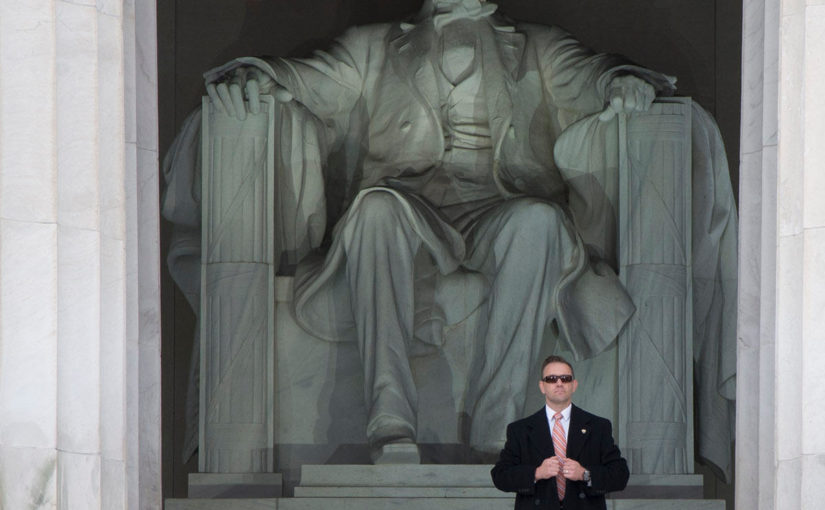New uniformed division officers of the Secret Service can expect to make about $60,000 a year, but the road to get there is filled with blood, sweat and training. Lots and lots of training.
Blaine Forschen, assistant special agent in charge of the talent and acquisition management division, Antonio Davis, officer technician in the Secret Service Uniformed Division, and Special Agent Lisa Robertson gave a presentation to students interested in joining the Secret Service and answered questions Monday in the Memorial Union. The department of criminal justice and political science organized the event.
To become a Secret Service agent, one must undergo rigorous and thorough training. This training starts at a Federal Law Enforcement Training Center.
“This’ll be the only time in your life where you can crash a car and not get into trouble,” Davis said. Prospective officers learn police procedures, driver training and firearms training among other things.
After this 12-week program concludes, an additional 14-week program begins at the Secret Service’s training facility outside of Washington, D.C. where specialized instruction teaches “the Secret Service way and how we want it done,” Davis said.
Once the 26-week training program is over, recruits finally graduate to the big leagues where they will be “equipped for whatever,” according to Davis. They will be placed in one of three sectors: the White House, the Vice President’s residence and foreign affairs.
After working for three years, uniformed division officers have the chance — if they meet all basic requirements — to advance into a specialized team that comes with a 6 percent pay increase.
These teams include the countersniper team, emergency response team, canine motorcade support unit, crime scene search unit and the office of human resources and training.
Countersnipers travel at least 200 days of the year according to Davis. The countersniper team is also making history. For the first time ever, “We have two women on our countersniper team,” Robertson said. “And those women can shoot.”
While working away from the D.C. area, officers are given a per diem for food. This allowance can be pocketed and saved or spent immediately.
Forschen said that after a few weeks working in Australia, he was able to buy his daughter an $18,000 car with the cash he’d saved from the per diems. “Wouldn’t it be nice to be his daughter,” Robertson joked.
The per diem amount is based on city location. For instance, officers receive $74 per day in New York City, but nearly $300 if they’re working in Japan.
One of the busiest times of year for agents is during election season. Officers are pushed to physical and mental extremes as they work 30 consecutive days on the job. They are rewarded, however, with 30 consecutive days off the job. “I’ve never been bored in this job,” Forschen said. “But my feet do hurt,” Robertson shared.
The Secret Service originally fell under the jurisdiction of the Treasury Department after its creation in 1865. The Secret Service’s main objective back then was to investigate and prevent the dangers of counterfeit money that flooded the Union after the Civil War.
After the assassinations of Lincoln, Garfield and McKinley, all of which took place within a 30-year span from 1865 to 1901, the Secret Service had a new objective: protect the president, no matter who he or she may be, Forschen said.
“You pick them. We protect them,” Robertson said. She followed up by saying whatever bias agents have politically must be left out of the workplace in order to fulfill their duty.
For those interested in learning more or applying to join the Secret Service, more information can be found at https://www.secretservice.gov.
